Centurion Running
100 Mile Training Elements
This post follows on from the Building a Plan post from last year. It's designed to pick the general elements that contribute to success at specifically a 100 mile trail race, though many of the facets can be applied to ultras/ running events of all distances.
This blog is about the central components of successful training ONLY, within each individual heading is a huge range of detail. What's important is to get the general principles right, before drilling down and fine tuning.
The structure of this post is to take an individual contributing element to success and look at the top line ingredients to fulfilling that element.
A main consideration is that the application of each elements particularly in terms of quantity and quality will vary dependent on the background of the individual.
Finally, if you are someone looking for completion of as many events as possible, races all the time, or who has multiple ultra races planned within close proximity to one another, many of these elements will need to be heavily adapted or eliminated completely. Adapt things to those which work for you but try to still formulate the outline of a plan.
Overview
The central premise of training in general and particularly in training for 100's where things can very quickly become all consuming and confusing, are:
Keep It simple. Keep it consistent. Keep it productive.
What does that mean?
Simplicity: Don't overcomplicate your training with specifics until you are doing the basics right.
Consistency: The greatest single contributing factor to your success at the distance, is consistency in training. Consistency is built day by day, week by week, month by month. It's no good running 30 miles as your weekend long run, if you aren't recovered enough to train producitvely again until Thursday. Plan your training. Write down what you'd like to fit in and match that against your work-life commitments at the start of each week to maintain consistency as far as possible.
Productivity: Make every mile count. Is your session going to A. improve your aerobic endurance. B. Work your Threshold/ Lactate to improve your speed/ form efficiency and strength. C. Speed up your recovery. It's ok to run miles for enjoyment only, sessions with no specific objective. But limit the miles you are running in to one of those categories and you will make gains on all counts, more quickly.
Stress/ Making Time
Reducing stress is the key to maintaining focus and consistency. Almost every runner headed to your goal event has commitments of family, work, commute and these things all induce stress at various times. If you do not look forward to your running, if it seems like a chore, then running is in itself a contributing factor to that overall stress. If that applies to you, consider taking a step back and thinking through if the timing is right to make the commitment to training for a 100 mile race.
By writing a plan, you will find you make time going in to each day, to fit that session in. Having no plan usually equates to missed sessions or decreased productivity. Squeezing a session in at a less than optimum time is simply a reality of our busy lives and that's ok. Not running because you planned your day badly and otherwise could have, is frustrating and has a negative impact on your consistency.
Writing Your Plan: Polarised Training/ Phases
The article Building Your Plan goes in to more detail on this element. This is the area is where generalisations are most broad. These are very top line guiding principles only, you must apply your plan to where you are at in your running career and where you are in your cycle.
For a 100 mile race, aerobic endurance is of paramount importance. As such a polarised training model is one to consider following. That is, your training should either be easy, or very hard.
Simply, run the majority of your mileage Easy/ in Zone 2, working your aerobic system and make the most signficant gains on your endurance whilst allowing your body to recover quickly to be able to train again and maintain consistency/ run more often. Working your aerobic base works your aerobic metabolism, teaching your body to burn fat and become more efficient at covering longer distances. Running easy promotes that, running out of zone 2 does not. So if you train too often in the middle ground, between easy and hard, you are training your body to do something you are not asking of it in a 100 mile race. Run slower to get faster. Here's my favourite video of how the polarised training model functions. (Stick with it).
Include quality training: Speed (Tempo, Progression, Interval, Fartlek) and/or hill work once-twice per week. Hard running should formulate around 15%-20% of your total weekly mileage. Hard work outs need to wait until the Build and Peak phases of your plan. Don't start speed work too early. Begin by incorporating a few fast intervals of 800m to 1 mile within easier work outs. Speed work is going to strengthen your muscles and ligaments but is requiring of more load in order to do that, so earlier in a cycle you are more prone to injury by incorporating these work outs.
Pick a total training block and within it (don't exceed 12 weeks), break it down in to key periods. If your training block is longer than 12 weeks, then consider a stepping stone race(s) on route that allow you to split it down in to more than one block of between 6 and 12 weeks, ideally around 8.
- Base: Simply building your aerobic base
- Build: Introduction of Harder work outs and increasing mileage gradually to continue progression of aerobic base
- Peak: This should not be a big jump from your build. Simply 2-4 weeks where you are operating at a consistent high level.
- Taper: Make sure you give your body and mind a chance to recover from the rigours of training.
*Drop an easy week in between each one of these phases.
This is a huge topic and one I am going to end there with for now.
Quantity & Quality: How many miles should I run?
The most common question asked of us. One thing is critically important to working this out, that is that you are completely different to the next person. Generally speaking you want to run as much productive mileage as you can, without compromising on consistency or on your health (illness/ injury). Ask yourself how much you can really fit in? Don't look at the mileage element, look at the time element. An off road run through ploughed field 'trails' in British winter is not the same as a road run in the summer. The former could easily equate to 1.5 times the latter in terms of mins per mile or total time for session mileage.
A particularly 'high quality and fast' local trail in my area.
I will use two extreme examples to give you an idea of how wide a net can be cast here. In training for relative 100 mile events over a 10 week period we have had top finishers setters at our events average at the lowest 40 miles per week and at the highest, over 200 miles per week in the 10 weeks prior to race day.
Find an optimum level that works for you, ensuring your mileage is productive. If the session is working the three things we mentioned before; aerobic endurance, speed/ strength, recovery, then it can stay. It will be hard to fit it all in at times, that's life. But don't be lazy, run as a habit and do it as often as you can whilst allowing for adequate rest and recovery (rest can mean an easy run and doesn't have to mean total rest).
Pacing & Pace vs Effort
Simply, when you run off road, ignore your pace and look at your effort or Heart Rate instead. Running to effort is a crucial skill for 2 main reasons on a 100 mile trail event. Firstly, being off road, the underfoot conditions and elevation changes you are likely to experience make every mile different. Consider how reducing your run to a steady hike on a steeper climb leaves you working at the same effort as a run on the flat. Balance that effort and practice keeping it as steady as possible during longer runs. Secondly, your Heart Rate will show significant drift and will more than likely, not be a reliable source of biometric feedback in the latter stages of the race.
Social Media/ Training tools
Read blogs and information shared by top runners and experienced coaches. Do not allow consumption of other runner racing or training to lead you off course, pick elements of others plans that make sense and fall in line with your general principles to fine tune your training. Have faith in what you are doing. Be inspired by others but aim to inspire others by setting your own example.
Mental/ Emotional
Visualise yourself running the event during training. Do the training that gives you the confidence that you will have a good day. Be prepared for low patches and know how to reduce those plus turn them back in to good patches. By doing back to back long runs you will likely suffer some mental lows. Work through them by practicing your pacing and your fueling, and allow yourself to build confidence in the knowledge that the lows will not last.
Reduce stress on race day by planning as much as you can ahead of time, not just for the ideal race day, but for eventualities if things are not as you expected ie. bad weather, poor underfoot conditions, high or low temperatures and/ or changes to the race course.
Racing as training.
Racing or running in a race, is a skill on it's own. Not just in terms of tactics and execution, but in terms of preparing for it, packing for it, eating and drinking before hand, getting a good night's sleep free from anxiety over what's to come. If you race more, you will find that your stress prior to 100 mile race day is likely reduced.
Use shorter races as stepping stones to: Practice turning up to and running a race, As Speed Work, As Performance indicators through a training cycle, As a confidence boost.
You have a Park Run near you that happens every week. These are free and great community events. Use them in your training. Local 10k's, Half Marathons and Marathons are also great as long as you feel you can bounce back quickly and maintain consistency the following week.
If you are planning on including ultras as part of your training, consider the impact they will have on your consistency. Within 12 weeks of a 100 miler, a long race will likely require a period of taper and recovery. Is it possible that the length of time the race will remove from your key training block, will outweigh the psychological and physical benefits plus experience of running that event? If no then run the event. If yes, then consider what is most important to you.
Long Runs
Ask yourself if your long runs impact on your consistency. Running 20 miles on a Saturday and 30 miles on a Sunday may allow you to recover in time to run a productive session on the Tuesday. Running 50 miles on either day in one go, will likely not. The reality for many of us is that the weekend is the only time in the week where we can fit long runs in, but by doing two shorter runs you may well find you become far more productive both within that week and over the course of weeks and months. If you are not held to a standard working week, then think about extending your training cycle to 10 days, fitting long runs in.
Rest/ Recovery/ Sleep/ Diet
The most important single factor in recovery and therefore consistency of training, is sleep. It's easy to forget that it's not the session itself that makes you fitter, but the process of recovering from it and allowing your body to rebuild stronger. If your sleep is compromised, your body will not recover as quickly or as well. Allow for that in your training and respond to it if you have had poor sleep.
Similarly, consider your diet. Make small gains by eating whole foods and arming your body with everything it needs in order to rebuild stronger and more quickly. I am not going to touch on diet in any further detail here, other than to say that eating a rounded, healthy diet should easily be enough to keep you on track through the entire process of training for and running a 100 mile event.
Specificity
Simply, make your training specific to your race. Particularly focus on specificity in your long runs. Make them as similar to your race day as possible, if you can do them on the race course itself, then that is ideal. Here's two very basic examples of things to think about, out of a huge number that could be included:
- Are you going to run the entire race or is it likely that quite a significant element of hiking will be involved? Then, have you practised hiking in training?
- Does your race go through the night? In all likelehood yes, have you spent time running with your headlamp?
Training in the mountains is great fun, not great specificity for a flat trail 100 but benefits include key strength and conditioning.
Nutrition, Hydration, Gear, Footwear
Again these are endless subjects so initially think about the basics:
Train in a variety of footwear, but return principally to the shoe you plan to use during the race. Change your shoes regularly, don't wait for the onset of injury as footwear becomes too worn down.
Train with the exact gear you will use on race day, as often as you can. Have to wear a pack with mandatory gear on board for an event? Wear that pack, fully loaded on your long runs. Work out where it might chaffe or rub and adjust for it. Reduce what you need down to a minimum to save weight but don't leave yourself short on the quality of an item or leave it out altogether if it might save your race.
Eat and drink on your long runs how you plan to in the race. Build a race nutrition plan and stick to it. Don't try something new on the day. Rely on real food complemented by sports nutrition where possible.
PLAN! Are you 100% sure how long your headlamp battery lasts!! This issue occurs so often in 100s.
Physical Prep/ S&C/ Massage/ Foam Roll
Running a lot is a constant cycle of breaking your body down and rebuilding it back stronger. Foam rolling and regular sports massage are essential in preventing injuries and maintaining consistency. Much strength and conditioning can be done through off road running, because that exercise works not only the main muscle groups but all of the supporting muscles and ligaments too. Specific S&C/ Physical Prep will give you added strength if brought in successfully to complement the running. Using your own body weight at first is fine. Yoga, Cross Fit, Swimming, Cycling and other cross training activities should be employed once per week for either recovery or general strength and conditioning. Apply them to the plan when they won't impact upon your run training.
That's It
There's a lot to think about here. Start with the very top line principles and apply them vertically to your training, adding detail only once you are sure you are getting the fundamentals correct.














